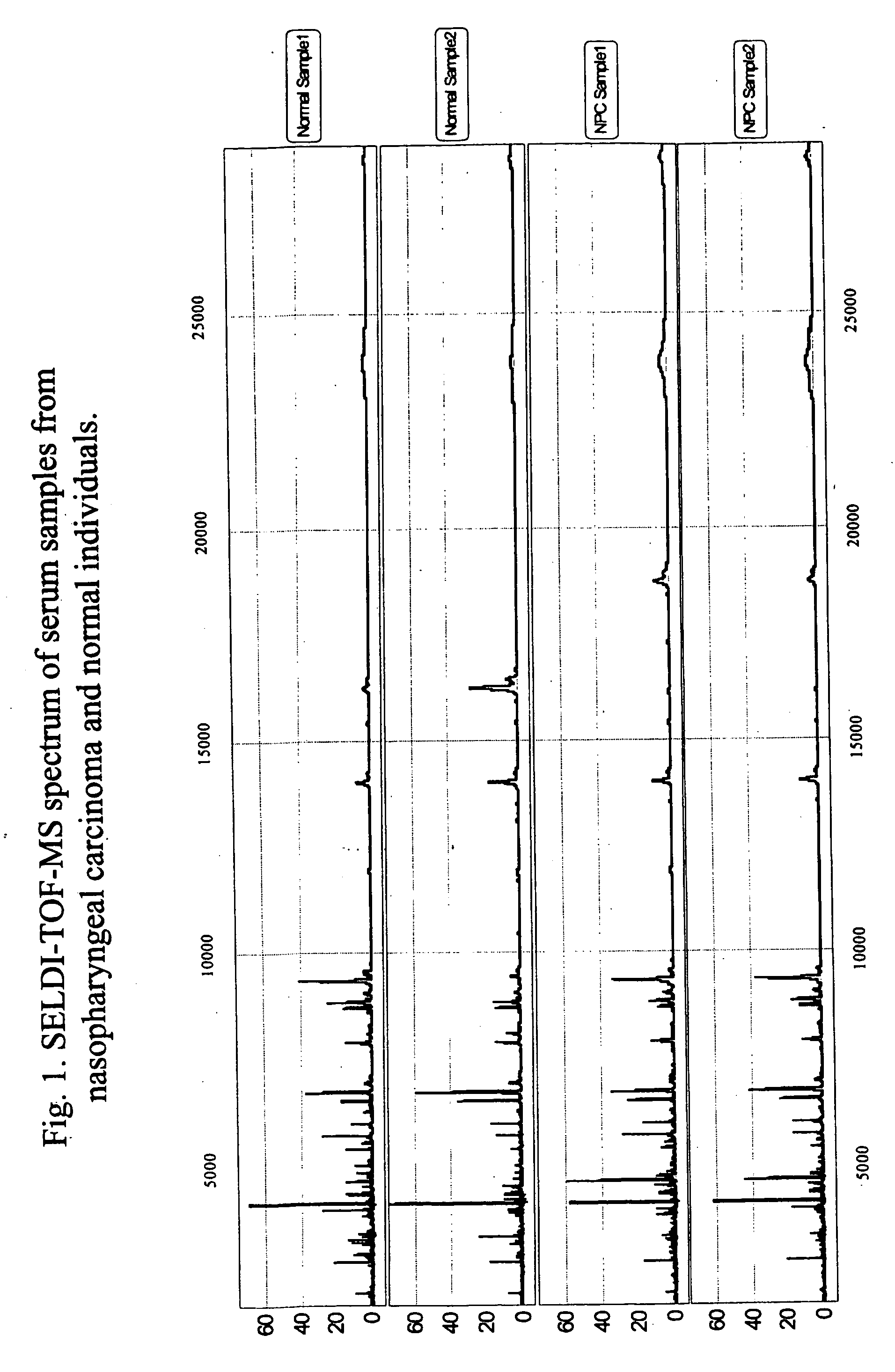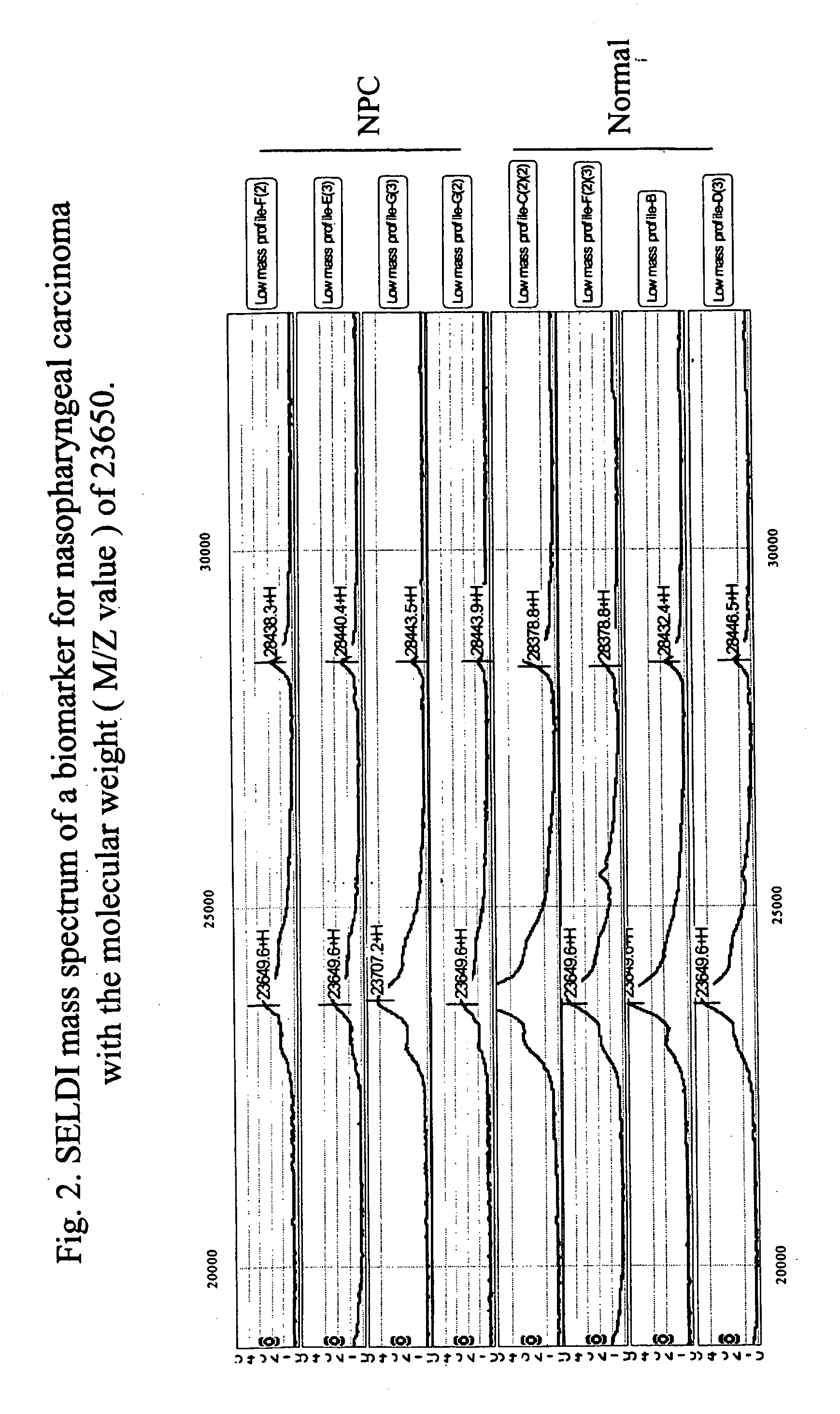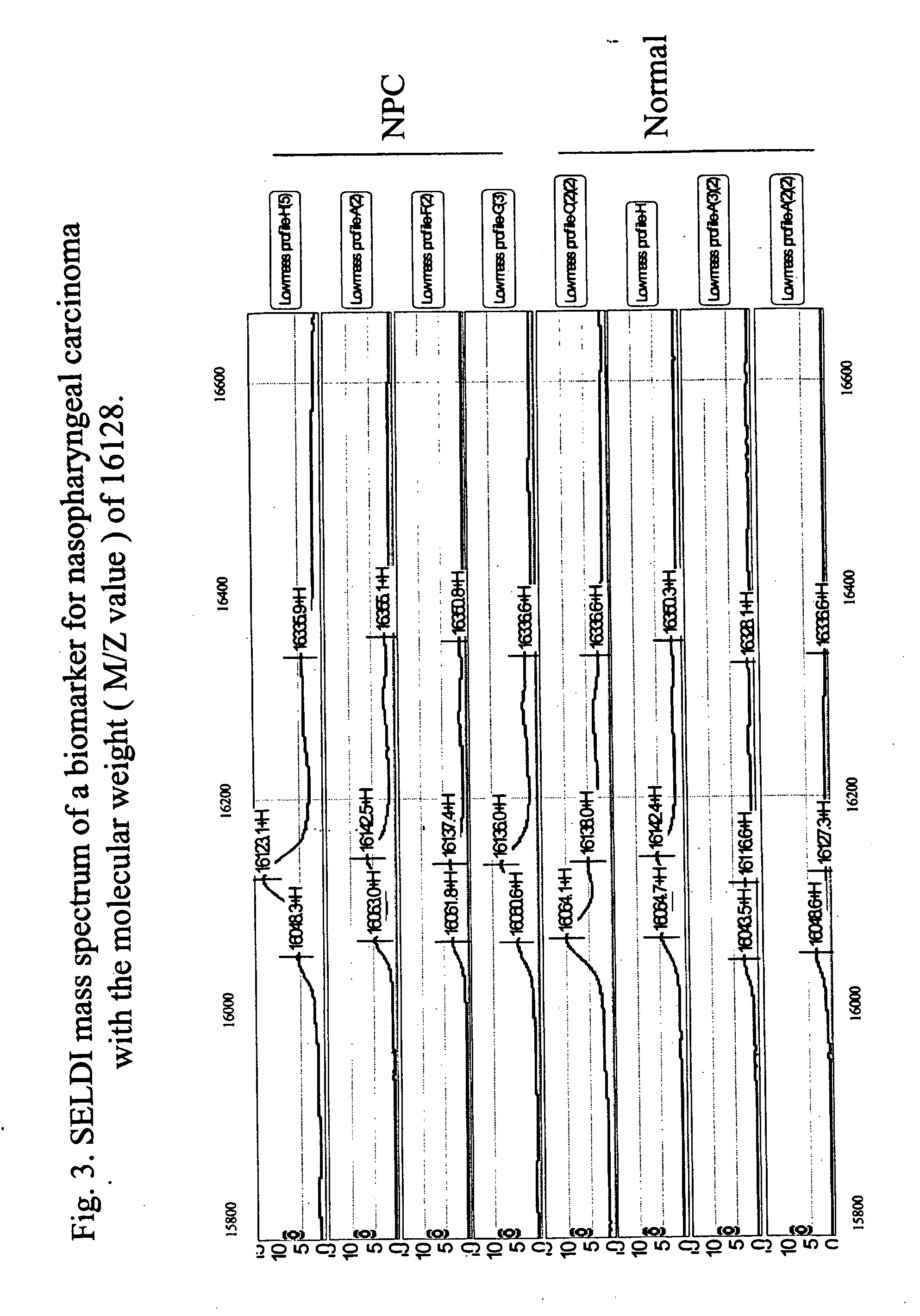Methods and compositions for detection of nasopharyngeal carcinoma
- Summary
- Abstract
- Description
- Claims
- Application Information
AI Technical Summary
Benefits of technology
Problems solved by technology
Method used
Image
Examples
example 1
[0089] Patients
[0090] Patients of nasopharyngeal carcinoma were chosen based on their confirmed pathological diagnosis by nasopharyngeal biopsy. None of the patients in the disease group has previously undergone through any radiotherapy, chemotherapy or surgery procedures. Normal individuals were eligible to participate if they have no evidence of any nasopharyngeal disease and in the corresponding sex and age group as those of patient group.
[0091] Serum sample collectionSerum samples were collected from individuals using silica activator test tubes from BD Bioscience Co., which does not contain anti-coagulation reagents. 3-5 ml of whole blood sample was set at 4 C for 2 hours which allows a natural blood coagulation within the tube. Extra care must be taken not to disturb the tube which might cause red blood cell lysis and the release of hemoglobin, which might subsequently interfere with the protein signals on SELDI chips. Samples were then centrifuged at 1000 g for 5 min. And t...
example 2
[0092] ProteinChip SELDI-TOF-MS Analysis
[0093] By SELDI-TOF-MS proteomic technology (Ciphergen Biosystems), serum from pharyngeal carcinoma patients (n=35) and healthy individuals (n=40) were compared under the same testing parameters. Following the serum sample preparatory steps illustrated above, various protein chip arrays, including WCX2, IMAC-3-Ni, IMAC-3-Cu, SAX2, H4 and H50 were tried. Protein Chip WCX2 was chosen based on its performance on the identification of biomarkers specific for nasopharyngeal carcinoma.
[0094] Serum samples were taken out from 80 C refrigerator and thawed on ice. Dilute 3 ul of serum sample with 6 ul of U9 buffer (9 M urea, 2% CHAPS, 50 mM Tris-HCl, pH 9.0) and incubated on ice for 30 minutes. Tap the tubes every 5 minutes in between when incubate on ice or shake gently and continually in a cold room. Dilute each sample into 108 ul of binding buffer (50 mM NaAc, pH 4.0) to make up a total dilution of 39×. Assemble a chip array into an 8-well bioproc...
example 3
[0097] Identification of differentially expressed pharyngeal carcinoma biomarkersProtein chip array WCX2 was used for the establishment of the biomarker panel for nasopharyngeal carcinoma. Using ProteinChip Reader PBS-2C, the mass spectra of proteins were generated by a laser intensity of 150-190 and sensitivity of 8-10, depending on the sample variations and experimental conditions. It is a common practice to collect more than one data spectra with different reading conditions. For data acquisition of low molecular weight proteins, the detection size range was between 2 and 40 kDa.
[0098] A panel of biomarkers specific for the diagnosis of nasopharyngeal carcinoma is established. The optimum discriminatory pattern for nasopharyngeal carcinoma was defined by the amplitudes at the key M / Z (mass-to-charge ration) values. The nasopharyngeal carcinoma specific biomarkers were found as M / Z values of 28383±142, 23650+ / −118, 16128+ / −81, 15741+ / −79, 15310+ / −77, 13930+ / −70, 11836+ / −59, 8998+...
PUM
| Property | Measurement | Unit |
|---|---|---|
| Composition | aaaaa | aaaaa |
| Electric charge | aaaaa | aaaaa |
| Ratio | aaaaa | aaaaa |
Abstract
Description
Claims
Application Information
 Login to View More
Login to View More - R&D
- Intellectual Property
- Life Sciences
- Materials
- Tech Scout
- Unparalleled Data Quality
- Higher Quality Content
- 60% Fewer Hallucinations
Browse by: Latest US Patents, China's latest patents, Technical Efficacy Thesaurus, Application Domain, Technology Topic, Popular Technical Reports.
© 2025 PatSnap. All rights reserved.Legal|Privacy policy|Modern Slavery Act Transparency Statement|Sitemap|About US| Contact US: help@patsnap.com



